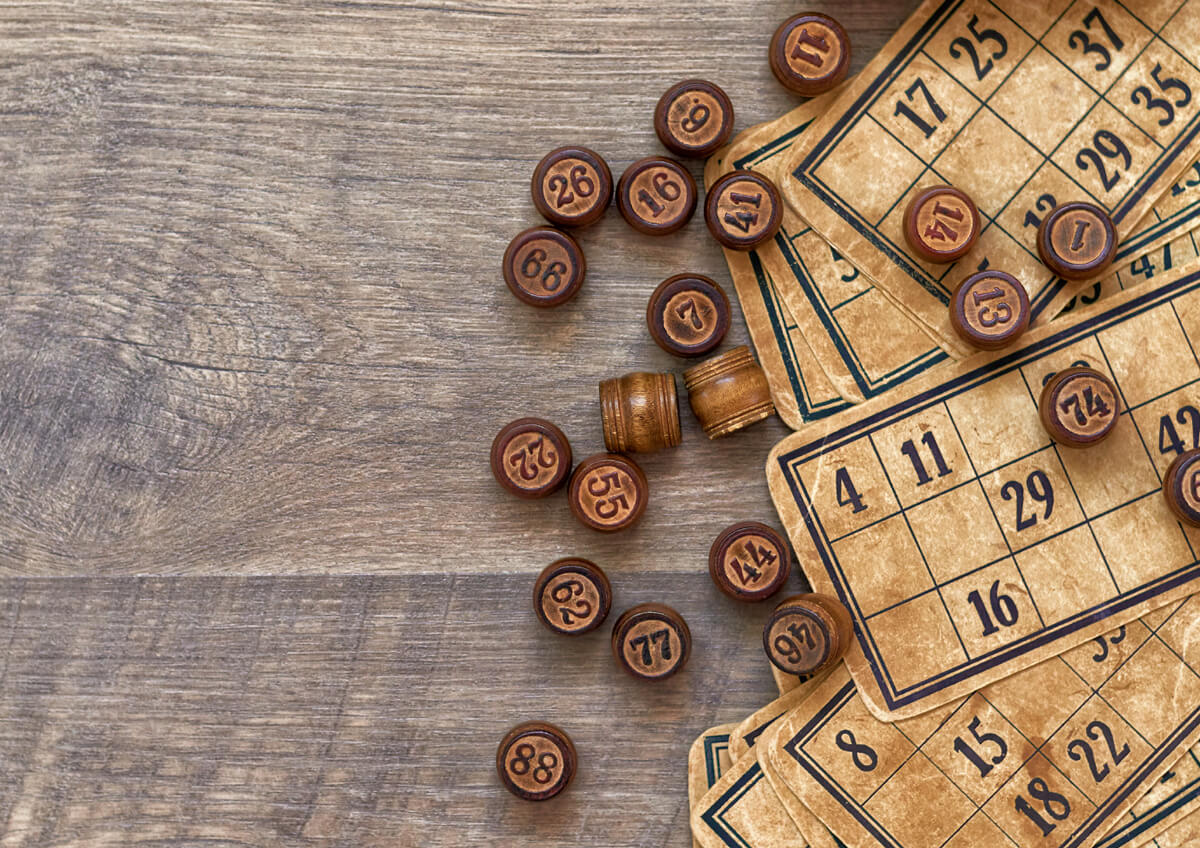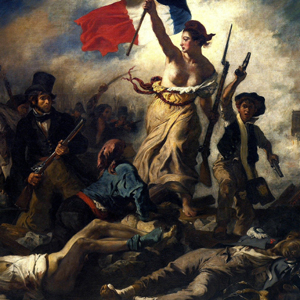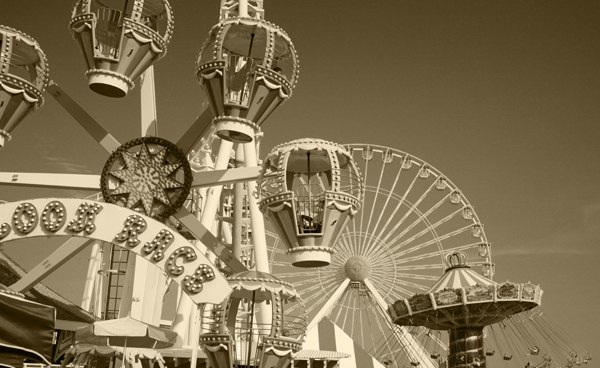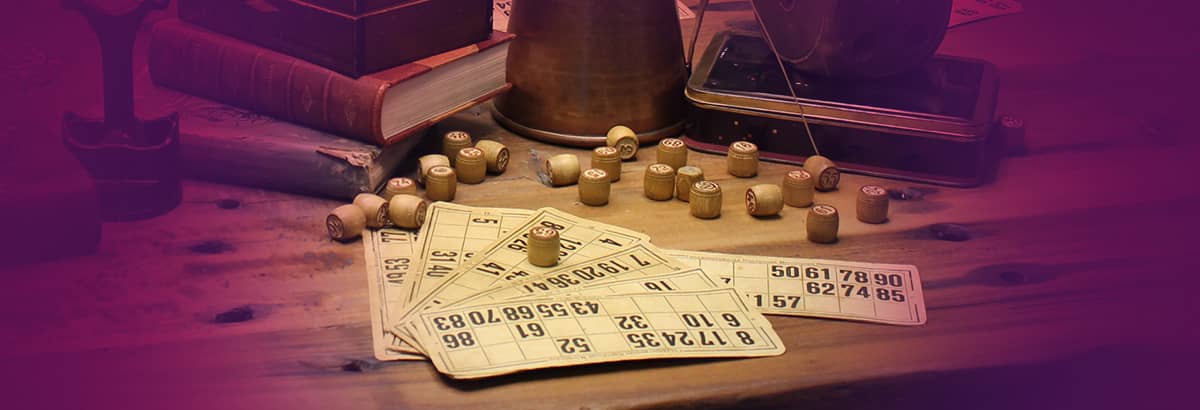
A Complete History of Bingo

-
Updated: 2nd Dec 2024
Bingo is a highly popular pastime that attracts significant interest, both online and off. While online slots and live poker are more widely-played, bingo nonetheless enjoys a substantial following, especially in the UK. And as we shall see, the game has quite an elaborate and eventful back-story. So how old is bingo? Well, it’s old. Not as old as gambling games such as baccarat or cards, but old nonetheless.
16th to 18th Centuries – Early Lottery Precursors
1500s – 1700s – Italian and French Lotteries, British Barrow ‘Bingo’
19th Century – The Game Takes Shape
1800s – Mexican Variants, Royal Navy Tombola
20th Century – Devastation, Regulation, Innovation
1900s – 1920s – Housey Housey, US Development, Edwin Lowe
1930s – 1950s – Backstreet Bingo, Illicit Gambling, Royal Commission
1960s – 1980s – UK Development, Birth of Commercial Bingo, Emergence of Major Bingo Brands
1980s – 1990s – The Golden Age, Image Problems and Decline, Early Bingo Websites
21st Century – Online Bingo Goes Global
2000s – 2010s – Gambling Commission, First Online Bingo Rooms, Introduction of Smart Technologies
2010s – 2020s – HTML5 v Flash, Gaming on the Go, First Bingo Apps
2020s – Present Day – Land-Based Rejuvenation, Bingo for the Young
16th to 18th Centuries – Early Lottery Precursors
According to most sources, bingo can be traced all the way back to sixteenth century Italy. By this time the Italians were already familiar with chance-based amusement having dabbled with dice for around 2000 years or so. Early lottery games were also popular during this period with one in particular giving rise to bingo.
1500s – 1700s – Italian and French Lotteries, British Barrow ‘Bingo’
Il Gioco del Lotto d’Italia
It’s generally agreed that bingo evolved from the Il Gioco del Lotto d’Italia – a fairly basic Italian lottery variant played in the 1530s in which players drew numbered tokens with the goal of matching corresponding squares on a game card. Although not the most enthralling game on the face of it, a modern version is still played there to this day.
Liberté, Egalité, Fraternité! – Le Lotto
The ecstatic abandon exhibited by players of Il Gioco del Lotto d’Italia, clearly caught the attention of Italy’s troublesome neighbour, France. By the 1770s, a version known as ‘Le Lotto’ (we won’t bother with the translation here) had become popular among Gallic elites. It was often played at parties and social gatherings, perhaps as a means of blocking out the looming shadow of the guillotine. This was after all, pre-revolutionary France.
To encourage the laughter and forgetting, a few changes were made. Game cards were added to play – these were marked with 27 squares organised into three rows and nine columns. Each row comprised five randomly-placed numbers and four blank squares, while the columns were numbered 1 to 10, 11 to 20, 21 to 30 and so on.
A caller was usually recruited as well to select a numbered token from a drum and read it out. Any players with a matching number would cover it with a wooden chip. The first to cover a horizontal line would be declared the winner.
The Teutonic Tombola
Different versions of Le Lotto spread throughout Europe in the late eighteenth century. In Germany, a similar game was used as an education tool to teach spelling, history and mathematics. In keeping with Le Lotto, the numbers were pulled out of a drum or tombola. Presumably, the goal was to spell out a word or number combination.
Bingo in Blighty
The British had also been busying themselves with random number gambling games from at least the fifteenth century. A public lottery was launched by the island nation in 1566 to generate funds for harbour repairs. Unfortunately, it was rather pricey – so much so that many people took to purchasing shares in the actual tickets.
To make matters worse, the tickets were only available for a limited period. As a result, more affordable, underground versions started to emerge such as ‘Little Goes’.
British Barrow ‘Bingo’
Games such as ‘Little Goes’ were popular among barrow women during the eighteenth century as was ‘Dicing’ – a game played using a wheel marked with random numbers. Innocuous by today’s standards, Little Goes occasionally attracted the ire of authorities. A report in the Newgate Calendar of 11 August 1795 reads:
‘On Friday night last, in consequence of searching warrants…upwards of thirty persons were apprehended at the house of one M’Cal…where the most destructive practices to the poor were carrying on, that of Private Lotteries (called Little Goes)…The wives of many industrious mechanics, by attending these nefarious houses, have not only been duped out of their earnings…they have been pawned their beds, wedding rings and almost every article they were possessed of, for that purpose’.
‘Little Goes’ is vaguely analogous to traditional bricks-and-mortar bingo, especially in regards to the make-up of participants. But it was essentially a lottery variant.
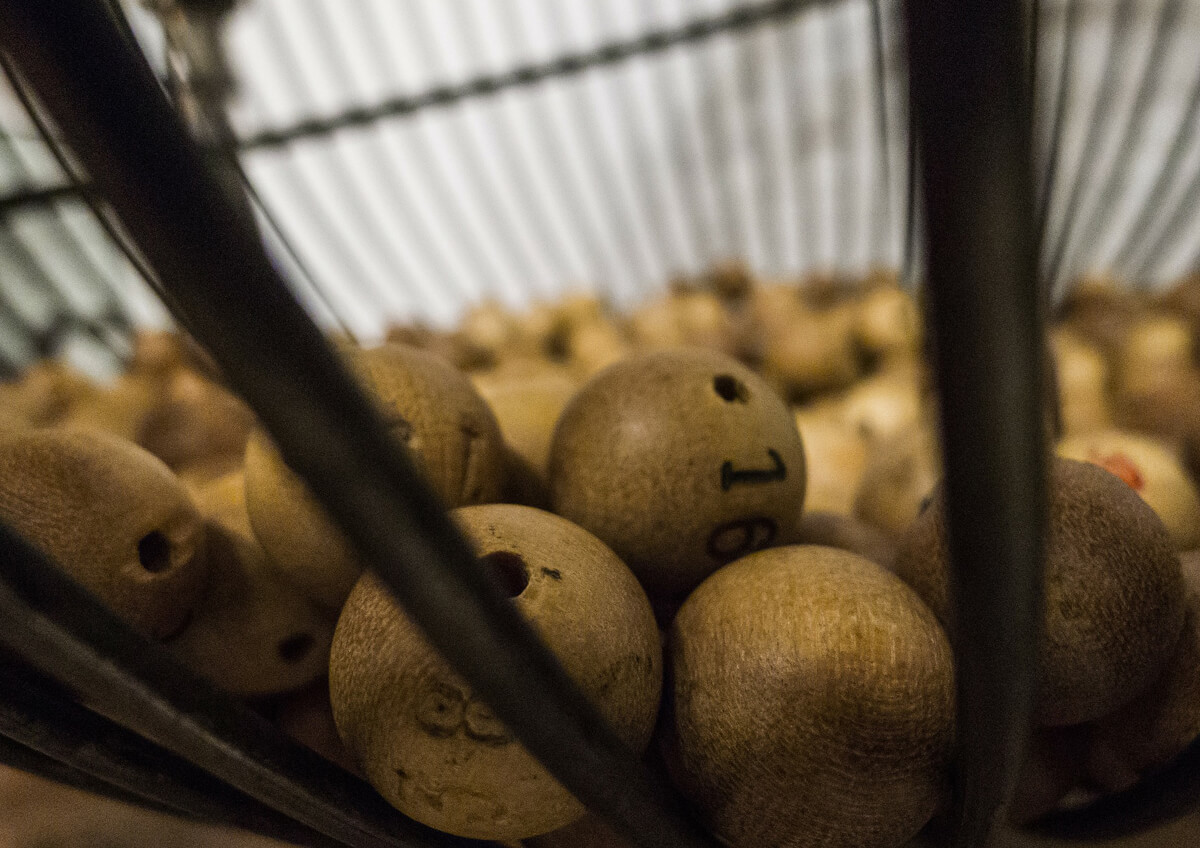
19th Century – The Game Takes Shape
It was during the 19th century that games more closely resembling modern bingo gradually began to emerge. The earliest known description can be found in the writings of US archaeologist and globe trotter, John Lloyd Stephens.
1800s – La Lotteria, Royal Navy Tombola
The Nocturnal Orgy
In 1841, John Stephens was on one of his jaunts in Mexico where he happened upon a rather lively and extremely well-attended game known as Loteria. His colourful account is considered one of the oldest documented accounts of a bingo game.
‘Every person at the table had before him or her a paper about a foot square, covered with figures in rows and a small pile of grains of corn, and by its side a thumping stick some eighteen inches long and one in diameter; while amid all the noise, hubbub, and confusion, the eyes of all at the tables were constantly upon the papers before them. In that hot place, they seemed like a host of necromancers and witches, some of the latter young and extremely pretty, practising the black art. Within arm’s length was an imp of a boy, apparently the ringleader in this nocturnal orgy, who stood on a platform, rattling a bag of balls, and whose intermittent screeching, singsong cries had throughout risen shrill and distinct above every other sound.’
‘The principle of the game… consists of different combinations of numbers, from one to ninety, which are written on papers, nine rows on each side, with five figures in each row…. Every player marks on his paper with a grain of corn the number called off, and he who is first able to mark five numbers in a row coins the purse. This he announces by rapping on the table with the stick, and by standing up in his place. The boy sings over again the numbers drawn, and if, on comparison, all is found right, delivers the purse. The game is then ended and another begins.’
Tombola in the Royal Navy
It’s generally agreed that the first organised version of British bingo was created by the Royal Navy around 1880. Quite how the navy happened upon the game is uncertain. One online source suggests that sailors learnt the game from Maltese locals while moored there in 1814.
Whatever the truth, it’s on record that the maritime branch of our armed forces officially authorised and operated a direct precursor to bingo known as ‘tombola’. By all accounts, tombola was a 90 ball game very similar to the version described by John Stephens.
The cards were organised into five digit rows with numbers marked off using uniform buttons and bottle tops. Tombola was eventually adopted by other branches of the military across the British Empire.
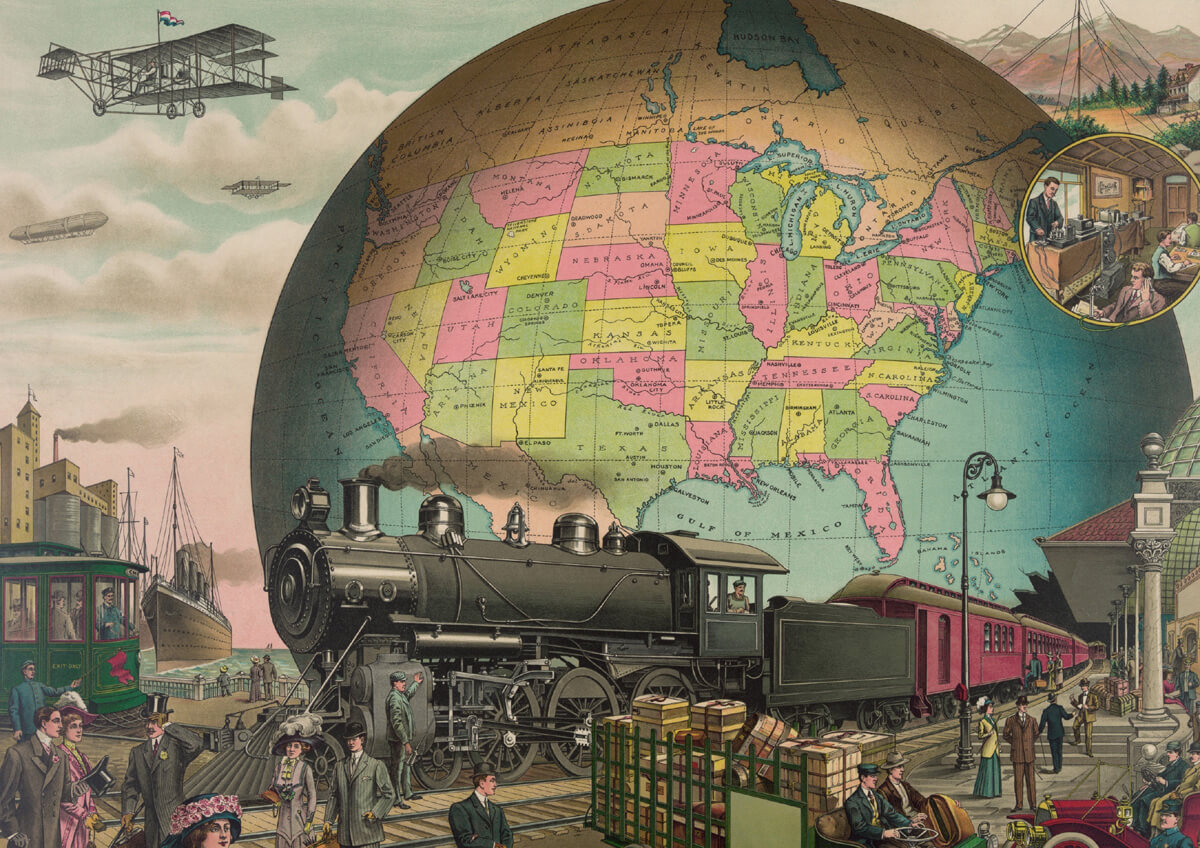
20th Century – Devastation, Innovation, Regulation
Bingo’s development gathered pace during the early twentieth century, despite the imposition of two global wars. In fact, these cataclysmic events actually assisted in its evolution. So too did the astounding technological innovations introduced in the waning years of the twentieth century. Yet, the modern game truly found its feet on the muddy battlefields of Western Europe.
1900s – 1920s – Housey Housey, Development in the USA, Edwin Lowe
Housey Housey
During the First World War, a variant known as Housey-Housey caught on with soldiers, offering respite from the grim realities of trench warfare.

The game featured the same kind of cards used for tombola with two men overseeing play – one called out the numbers, the other looked after the stake money.
Many of the Great War veterans continued to play this version once they’d returned to the UK. So the bingo calls that once echoed across Flanders and Ypres would eventually be heard in ex-service clubs such as the Royal British Legion throughout the 1920s.
Many of these bingo calls are still used to this day such as ‘legs 11’ and ‘two fat ladies’ – however fruitier calls such as ‘Pompey Wh***-24’ are no longer uttered (we can’t think why).
Peacetime Bingo in the US
How bingo found its way across the Atlantic isn’t entirely clear. Some suggest that the US version was imported by servicemen returning from the First World War. Others believe that it was influenced by a game played at German carnivals.
Bingo as Beano
What we do know is that the first transatlantic bingo game was named ‘beano’ and conceived by Hugh J Ward in the early 1920s. With Ward’s variant, a dealer/pitchman would choose numbered discs from a cigar box and call them out to players gathered around a horseshoe table. Those with matching numbers then covered their discs with a bean, hence the game’s name.
The process continued until a player managed to fill a line on their card. To declare victory, they’d shout ‘beano’. Ward copyrighted his creation, established rules of play and began holding events on the carnival/county fair circuit. It was at one of these events that famed toy-maker Edwin S Lowe first encountered Ward’s interpretation.
How Bingo Got Its Name
Edwin S Lowe is the man responsible for turning ‘beano’ into ‘bingo’ and popularising the game in the US. In 1928, Lowe set up a toy company on a rather limited budget of $1000. Unfortunately, his fledgling enterprise was decimated by the Stock Market Crash of 1920. So to make ends meet, Lowe began driving across America to spread the word about his ailing business.
All Roads Lead to Georgia
It was during one of these journeys that a travel-weary Lowe made the fateful decision to stop off at a county carnival in Georgia late one night. Many of the booths had been closed by the time he’d parked up. But Lowe noticed that one remained open and was attracting a large crowd. Straining to see over the onlookers, he witnessed Ward’s beano game being played out on a horseshoe table.
He also noticed the participants’ enthusiasm – despite the efforts of the pitchman to bring proceedings to a close, the players refused to leave. Intrigued, Lowe tried in vain to get a seat. Nevertheless, he recognised a sure-fire winner when he saw one and left Georgia full of ideas about how to develop the game.
Bean Counting in Brooklyn
Upon returning home, Lowe purchased some beans, a numbering stamp and cardboard. He then invited friends over to his Brooklyn apartment and held a couple of games. Performing the role of pitchman, Lowe observed the same kind of excitement in his guests that he’d witnessed at the county fair. So enthralled was one player after scoring a winning line that she bellowed ‘bingo’ instead of ‘beano’. Grasping the marketing potential of this fevered mispronunciation Lowe decided that a name-change was in order. Said Lowe years later:
‘I cannot describe the strange sense of elation which that girl’s cry brought to me. All I could think of was that I was going to come out with this game, and it was going to be called Bingo!’
Lowe initially planned to print the actual game cards before realising that wide-scale production might be somewhat curtailed if he relied on a rubber numbering stamp. Instead, he set up the E.S Lowe Company specifically to perform this task but on an industrial scale.
The first batch was released as a 12-card set and could be purchased for $1. This was later followed by a $2, 24-card set. Despite the burgeoning popularity of Lowe’s game, there remained one problem that needed ironing out. His bingo variant was producing too many winners when played in large groups.
Number-Crunching
The issue was first brought to the attention of Edwin Lowe by a Pennsylvanian priest who’d purchased multiple sets of Lowe’s 75-ball $2 game. Initially chastened by the news, Lowe determined that more non-repeating number-combinations were needed for the cards if his game was to be a success.
Lowe then contacted an ageing mathematics professor by the name of Carl Leffler and asked him task to create 6000 bingo cards with non-recurring numbers. The enormity of Lowe’s project certainly wasn’t lost on Leffler. But he agreed on condition that he was paid on a per-card basis.
Because of the mind-numbing complexity of random number permutations, Leffler’s mission became increasingly difficult as time went on. Without wishing to go into too much detail here about factorial calculations and such like, it’s fair to say that Leffler had his work cut out.
But following considerable delay not to mention expense, the forlorn professor made good on his promise. 6000 bingo cards were duly delivered to an impatient Lowe, each with its own set of numbers.
Leffler’s painstaking work lit the touch-paper and by the mid 1930s an estimated 10,000 games were being played in the US each week. Lowe’s production company also grew to more than 1000 employees, with 60 printing presses operating around the clock to meet the demand.
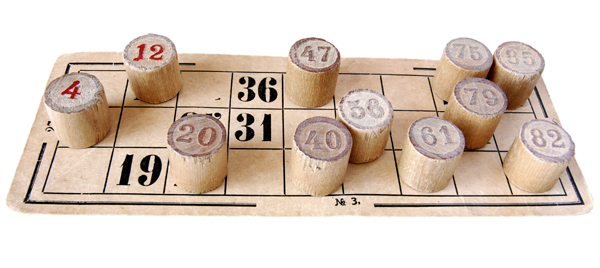
Lowe’s Early Bingo Sets
Lowe’s company eventually produced three complete bingo sets that included a wire tombola cage, 75 wooden balls, 25 bingo cards and 300 markers. Those looking to hold games with larger groups could purchase separately sold heavy-duty cages with sloping chutes for ball distribution as well as extra bingo markers, 1000 to a box.
Keen to target the home-based market, Lowe came up with lap-top ‘finger-tip bingo cards’ that allowed games to be played without markers or the need of a table. An instruction manual was eventually provided as well, followed by ‘The Blotter’ – a monthly newsletter with a readership of more than 35,000.
1930s – 1950s – Backstreet Bingo, Illicit Gambling, Royal Commission
Thanks to Lowe’s innovations, bingo became wildly popular in the US during the 30s and 40s. As testament to this popularity, the New York Teaneck Armoury played host to a game involving 60,000 players. But given the strict gambling laws applied by certain states, most public games were held by churches and charities as non-profit enterprises.
Street Bingo
Meanwhile, back in the mother country, the British were still persevering with their own bingo variant, Housey-Housey, albeit under the shadow of strict gambling laws. Under the Betting and Lotteries Act 1934, small lottery-style games were permitted in private venues as long as the proceeds went to charitable causes.
Advertising was prohibited though, as were cash prizes of more than £10. So it’s of little surprise that illegal bingo flourished during the 20s and 30s, with back-street games of Housey-Housey attracting great interest, especially in places like London and Liverpool.
Gatherings were frequently broken up by authorities and the perpetrators usually issued with fines rather than prosecution. The elaborate nature of these ‘street games’, is well-documented. A police report of the time describes the following scene:
‘Between thirty and sixty players were observed at each of the sessions of bingo, which run from 10am until 6pm daily. There was often a queue of people waiting for a bingo board to become vacant so that they could join the game. The players sat or stood around an open rectangle made up of tables on which were placed the numbered bingo boards.
Inside the rectangle was sufficient gangway for two assistants to move around freely during the game. One assistant would take the stake money and hand out the pasteboard squares that were used for covering numbers called. The assistant had a supply of wooden balls that were handed in turn to each player; the player would throw the ball into the box, thus selecting the next number to be called.’
Fairground Bingo, Holiday Camps
Bingo wasn’t just confined to the grimy backstreets of the inner-cities. By the early 1920s it was widely played at fairgrounds around the country and at holiday camps – practices that continued until the 1960s. The outbreak of the Second World War further cemented bingo, aka Housey-Housey, as the illicit gambling game of choice for a sizeable proportion of the great British public.
Lotteries, the pools and greyhound racing were also popular during this period – just how popular gradually became clear to elites in Government and the press during the interwar years. To gain a better understanding of ‘the mob’, numerous surveys were conducted by befuddled social observers.
Like biologists pouring over a Petri dish, researchers examined the gambling habits of British working men and women. One such study was performed by B. Seebohm Rowntree – a chocolate manufacturer and ‘social investigator’ who also happened to be chief financier of the National Anti-Gambling League.
Poverty and Progress
In 1936, Rowntree conducted a survey of working class conditions in York where he encountered a game of Housey-Housey. The version he described in his book, Poverty and Progress, was played using cards marked with nine or fifteen numbers. Every time a player called out a matching number it was marked with a scrap of paper or token. Stakes ranged between 1d and 6d with the prizes taken exclusively by the winner.
Despite Rowntree’s partiality in relation to gambling, he conceded that the pastime among poor people was the result of ‘rational choice’. His findings were echoed by official studies such as the Orwellian-sounding Mass Observation of 1947 as well as the Mass Gambling Report 1948. Partly because of these and also because of cultural changes in Britain, perspectives on gambling as well as bingo began to change.
Royal Commission on Betting, Gaming and Lotteries 1949
This is highlighted by the Royal Commission on Betting, Gaming and Lotteries 1949 – the first impartial investigation of its kind to properly assess not just the extent of gambling, but the actual motivations behind it.
1960s – 1980s – UK Development, Birth of Commercial Bingo, Emergence of Major Bingo Brands
The Commission found that gambling, in many instances, was more a social activity than a societal ill. So it recommended a relaxation of existing laws and the creation of a regulatory framework within which certain gambling enterprises could be operated. The Commission’s findings led to the Betting and Gaming Act 1960, effectively legalising commercial bingo in Britain.
The Small Lotteries Gaming Act 1956 also set out rules for offering monetary prizes. Because of this legislation, clubs were permitted to operate commercial bingo, as long as the stake money was returned to participants. Large cash prizes were also permitted.
Birth of Commercial Bingo
The law changes released the shackles as it were. And the rest as they say is history. The game truly took off in the UK during the early 1960s, thanks also to the efforts of people like Eric Morley, the General Manager of Mecca.
Named ‘Mr Bingo’ by the British press, Morley’ introduction of bingo to Mecca venues around the country was very well-received. The game transformed Mecca from a small dancing and catering concern into a leisure and entertainment giant.
Companies such as Rank, ABC and Essoldo soon followed Mecca’s example, expanding their entertainment portfolios to offer bingo. At this point, 90-ball variants were the game of choice instead of the 75-ball version. Games were overseen by a caller who’d draw out the balls.
To keep players engaged during what could prove a time-consuming process, rhyming slang and puns were used to announce each ball – many of these were based on the earlier Housey-Housey bingo calls used by servicemen.
Backlash
The popularity of the early bingo venues was such that by 1963 more than 14 million people had become members of commercial clubs around the UK. Unsurprisingly, the fledging new industry attracted opprobrium in the Government and media.
In Parliament, debates raged about the affects of widespread gambling on the country. The press also did its best to whip up a moral panic about the game, especially with regards to the predominantly female player base.
Much like today, establishment journalists who found themselves at odds with the attitudes and behaviours of the wider populace resorted to moralisation, condescension and in some cases outright vilification. The Times derided the game as a ‘cretinous pastime’, denouncing female players who (allegedly) sent their children ‘after a hasty tea to hold their mother’s places in the queue’.
Bingo Boom!
The high-level hand-wringing did little if anything to temper the enthusiasm for bingo. Hundreds of clubs started opening their doors up and down the country, many of which found themselves competing with the Mecca and Rank venues.
Participants were therefore spoiled for choice with the high streets of some towns populated by multiple establishments. By the mid 1960s, the game was more than just a casual pastime – a lot of the venues also served as meeting places and social hubs. Thus, the communal side of land-based bingo was first established.
The early clubs were known as ‘bingo casinos’. To get around the advertising embargo, the big chains recruiting the services of celebrities such as Diana Dors, Max Bygraves and even a young Cassius Clay.
This guaranteed free and extensive coverage both in local newspapers and the national press. A lot of the venues took to releasing press releases detailing some of the prizes doled out to winners which often included Mediterranean cruises, expensive jewellery and luxury white goods.
This was the first boom period for bingo in the UK – by the summer of 1961, companies such as Mecca were selling half a million bingo books each week.
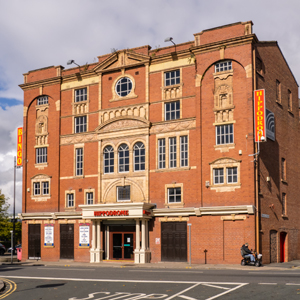
Cinema Bingo
To meet the insatiable demand, more bingo venues were needed. So companies such as Mecca, Granada and Rank turn their attentions to film theatres, many of which were either underused or had been abandoned altogether.
While some were demolished, others were snapped up and used as bingo clubs. Rank, which owned the Odeon chain, also adapted its venues to accommodate bingo games. In some cases, movie viewings were completely phased out in favour of bingo.
Introduction of Bingo Blowers
Machines called bingo blowers were also introduced during the 1960s to help speed up play but also to ensure fairness – there had been a few instances of bingo callers fixing results with patrons at some clubs.
To guard against this, the new machines required the caller to sit at a transparent container which shuffled the balls through air pressure. The ball was then pushed through a tube by way of a ‘lifter’, and it’s number displayed on a large board. Sadly, underhanded practices remained a big problem, and not just with how the game was called.
Lack of Regulations
Due to the limited controls imposed by the Betting and Gaming Act 1960, the industry had become tainted by criminality, particularly in regards to the smaller, independent clubs. Operators took to tampering with the fruit machines so that they didn’t pay out. Money laundering was also a big problem given that many of the bingo books didn’t include serial numbers.
This made it impossible to check how many had actually been sold so unscrupulous actors could falsely bank criminal proceeds as ‘bingo takings’. Because bingo winnings weren’t taxed, it was also possible for villains to declare that their ill-gotten gains had been won playing bingo.
To address these issues as well as other problems brought about by the liberalisation of gambling laws, new regulations were proposed for commercial gaming.
Gaming Act 1968
1964 saw the election of a Labour government bent on bringing the blossoming British gambling industry to heel. The extravagant prizes were a bone of contention as were the linked bingo games that generated them. Prize limits were therefore proposed as well as restrictions on advertising and an outright ban on linked games.
The Eric Morley Defence
Because of lobbying by Mecca boss Eric Morley, the Government climbed down in respect of linked bingo. Instead of outlawing the practice altogether, limits were imposed on games including a £250 per week cap on subsidised prizes, the venues re-branded as ‘social’ clubs and more emphasis placed on the communal aspect of play.
Consequently, many of the smaller bingo clubs and venues were put out of business. But Morley’s efforts saved commercial bingo in the UK and established the game as a national pastime for years to come.
1980s – 1990s – The Golden Age, Image Problems and Decline, Early Bingo Websites
The bingo industry continued to thrive well into the 1980s, thanks in part to the fiscal hedonism of the times. The spend-spend-spend ethos helped fill venues each week with patrons also drawn to new nationally linked games such as Prize Bingo. While the communal aspect remained, the game was primarily a pastime for women. This was the Golden Age of land-based bingo.
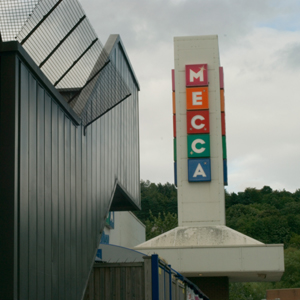
By the latter stages of the decade though, the converted high street cinemas were beginning to show their age and were becoming very expensive to maintain. To save costs and to acquire more floor space, operators started building purpose-built, out-of-town venues.
Pastime for Pensioners, Decline
As the 1980s drew to a close, the bricks-and-mortar bingo industry saw a sharp decline from which it never really recovered. For the first time since the 60s, active nationwide venues dropped below 400 as attendance rates plummeted.
There were a couple of reasons for this dramatic fall from grace. To begin with, bingo had acquired something of an image problem. The average age of club members in the 90s was 62, leading many to conclude that the game was a pastime for pensioners. The introduction of the National Lottery in 1994 also took its toll. In contrast to bingo, people could play for massive prizes at relatively little cost.
The smoking ban introduced in the mid 2000s accelerated bingo’s decline further as did harsh tax rates. Bingo hall profits were taxed at 20% in comparison to the 15% and 12% levied on bookmakers and lottery vendors respectively.
Yet, as land-based play disappeared into the void, the advent of the internet helped ensure the game’s survival, propelling it into the twenty-first century.
Gambling Goes Online
The internet began to find its feet in the 1990s, as did virtual gambling. The collaborative nature of the ‘information superhighway’ as well as the huge money-making potential of online gaming was there for all to see. But initial progress was painfully slow, much like the connection speeds.
The Dial-up Days
Early efforts to create gambling websites were beset by sluggish connectivity and archaic technologies. Of particular hindrance to the development of online gambling was the fact that secure transactions weren’t actually possible.
Software company Cryptologic managed to solve this problem in 1995, by creating a website that allowed for safe web-based payments. To showcase this crucial innovation, it launched the very first real-money iGaming platform, Inter Casino. This was followed a year later by the first bingo website.
The Blitz Begins
Bingo Zone is the earliest known dedicated bingo website and was unveiled in 1996 by Boston entertainment company, Gamesville. The website was crude in appearance and offered basic, free-to-play 90-ball games. Even so, Bingo Zone caused a major stir online paving the way for numerous imitations such as the UK’s Bingo Blitz, launched in 1998.

21st Century – Online Bingo Goes Global
By the turn of the century, the writing was truly on the wall for land-based bingo. Over the next twenty years, the game as well as its players would change beyond all recognition.
2000s – 2010s – Gambling Commission, First Online Bingo Rooms, Smart Technologies
Online gambling verticals flourished in the early 2000s. The speed of development was such that authorities struggled to keep up, particularly in regards to regulation. In the UK for instance, the creation and hosting of online gambling sites remained illegal.
This changed following the Gambling Review Report 2001, which allowed UK-based casino and bingo operators to enter the market. In effect, this opened the flood-gates to such a degree that by 2004, some 20 websites were plying a tentative trade online, including Think Bingo and Prize Bingo – these were among the first to offer 75-ball, 80-ball and 90-ball bingo games.
Gambling Commission Established
Some seven years after the Gambling Review, the Gambling Act 2005 was enshrined into British law and the Gambling Commission came into being. Tasked with regulating online gambling in Britain, all online providers were required to meet specific criteria before being issued with operating licenses.

However, the Gambling Act did away with many advertising rules, permitting bingo operators to advertise their wares on television, radio and in print. As with the land-based boom some forty years prior, online bingo was beginning to attract a lot of media exposure which in turn attracted celebrity bingo endorsements from the likes of Katie Price, Barbara Windsor and Sharon Osbourne.
Broadband Bingo – The First Bingo Rooms Open
The widespread use of high-speed broadband from the middle of the 2000s meant that the true potential of the internet could be fully exploited. Connections were now hundreds of times faster than dial-up methods and far more reliable.
Emboldened by these advances and the enormous success of social media platforms like Facebook, specialist online operators such as Foxy Bingo started to emerge with dedicated online bingo rooms. Just like the clubs and converted cinemas of the 1960s, web-based bingo was turning into a communal pastime.
Land-Based Brands Join the Fray
Keen to offset their land-based losses, traditional bricks-and-mortar brands such as Mecca and Gala then threw their hats into the ring. These once dominant high-street operators unveiled their own platforms in the hope of acquiring much needed new revenue streams.
Finding themselves in direct competition with online specialists as well as newspaper brands like the Sun, many of bingo’s most celebrated brands leveraged their financial clout to boost their presence on the web.
How the Early Online Bingo Sites Worked
At this stage in the development of online bingo, players were required to download Flash-based software onto their personal computers. Once installed, the software client would then connect to the actual website from which it was downloaded without the aid of a browser.
These standalone environments were faster than the web-based casinos of the time. But the process of downloading and installing the software was often laborious and time-consuming even with broadband connections. There were also issues regarding security.
In spite of these little problems, the relative ease with which players could play against and interact with other participants around the world led many observers to conclude that online gambling at reached its zenith. Further innovations were however afoot.
Advent of Smart Technologies
The introduction of smart technologies in the mid to late 2000s led to a massive transformation in online gambling. In less than a decade, smart phones and tablet devices would supplant desktops and laptops as the browsing platforms of choice for the vast majority of gamblers.
Unfortunately, the global revolution was held back by the limitations of the early smart-phone/tablet operating systems and the need to download separate software such as Flash. While just about acceptable for desktop computers, Flash in particular was found wanting on mobile devices. Sluggish, buggy and insecure, it also didn’t work all that well with touch-screens and wasn’t even supported by Apple. Thankfully, a solution was at hand: HTML5.
2010s – 2020s – HTML5 v Flash, Drive for Responsivity, First Bingo Apps
Flash! And Adobe’s Gone
HTML5 was proposed by Apple guru Steve Jobs in 2010 after he eviscerated Adobe’s forlorn Flash framework in a very public open letter. Never known to mince his words, Jobs suggested that HTML5 would be the perfect replacement. And he was right.
HTML5 v Adobe Flash
The fifth iteration of the web’s standard mark-up language offered numerous advantages over Flash. It ran natively in all web browsers without the need of a plug-in, required less processing power, wasn’t as resource intensive and was far better suited to touch-screens. What’s more, it enabled casino and bingo developers to easily create 2D/3D games and was very secure.
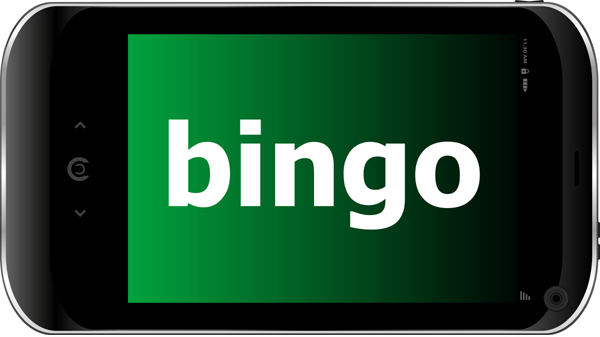
Gaming on the Go! – Responsive Bingo Websites
It wasn’t long before HTML5 had been universally adopted by most online casinos and mobile bingo sites. Represented a huge leap forward in terms of development, operators could create flexible, responsive bingo websites that displayed across multiple screen resolutions.
This coupled with more widespread mobile internet connectivity ushered in a new era of online gambling. From 2015, punters were able to play at the bingo and slot sites from almost any location they chose.
Bingo Apps Introduced
Notwithstanding the strides in mobile browser-placed play, some bingo operators opted to harness the potential of smart technologies by creating apps to complement their websites. With no need to input a URL, these dedicated programs were less fiddly than browser based platforms as well as being marginally more secure.
But as HTML5 technologies have continued to evolve, the use of bingo apps as standalone gaming environments is being phased out. There’s now little to choose between the apps and the websites themselves, save for simplified login processes. A few land-based operators such as Buzz still use apps in conjunction with their bricks-and-mortar venues. However, they’re now little more than companion platforms.
2020s – Present Day – Land-Based Rejuvenation, Bingo for the Young
Current State of Online Bingo
Despite the introduction of stricter gambler rules and regulations, especially in the UK, online bingo continues to thrive. Today, the industry is worth more than £200 million. Developers, uninhibited by slow connection speeds, clunky third party software and rudimentary web technologies, can now create online bingo games that are truly communal.
Gone are the days where players were restricted to playing just one game. Pretty much all websites serve multiple versions of online bingo games including 30-ball, 75-ball, 80-ball and 90-ball bingo. The game is also cheaper and the prizes much larger thanks in part to higher participation levels.
Current State of Land-Based Bingo
So what of land-based bingo? Has the online game spelled its death knell? Not entirely. In the US, its progress has been hindered by the rigid gambling laws imposed by many states. In places like Nevada where gambling is permitted, the game plays a distinct second fiddle to slot machines and green-felt games.
Nowhere is this truer than in Las Vegas where jingling gaming cabinets, blackjack and poker tables occupy centre stage. The hope is that the gradual relaxation of regulations may help with bingo’s development in the near future.
Rebranded Renaissance
In the UK, bricks-and-mortar bingo is enjoying something of a renaissance with many operators targeting a younger crowd. In saying that, current opinions of a bingo ‘night out’ are rather different to those held by the likes of Eric Morley. Bongo’s Bingo is a prime example.
Bongo’s Bingo
Bongo’s Bingo was created by event organisers Jonny Bongo and Joshua Burke to attract Liverpool’s student/clubbing crowd. It’s a kind of nightclub bingo hybrid that incorporates elements of rave, dance and quite a lot more besides. The first event was held in 2016 and quickly became a big success. Today, Bongo’s Bingo is held in some 50 locations around the world.
Controlled Chaos
Games are overseen by a bingo caller/MC and interspersed with dance-offs and table catwalks. The caller is usually accompanied by a pair of cross-dressing dancers who cavort across the main stage to various chart toppers from the 1990s.
Prizes include sex toys, space hoppers and boxes of cereal. All a far cry from the dignified glamour and glitz of the 1960s – but that’s how things are these days. Indeed, Bongo’s Bingo is a full frontal assault on the senses – an uproarious, caravan of crudeness that careens from one town to the next. And the youngsters love it.
Dabbers Social Bingo
Other companies are more restrained in their efforts to attract younger players. Dabbers Social Bingo in Shoreditch manages to lay on a full night of entertainment without resorting to vulgarity. But much to the chagrin of dyed-in-the-wool players, a lot of the traditional bingo calls have been replaced with millennial slang.
Word Soup
For the number 88, ‘Two fat ladies’ is now announced as ‘two body positive ladies’. Then there’s Number 9: Selfie Time and 71 J-Lo’s Bum. Dabber’s food menu is also aimed squarely at health-conscious hipsters and is thus devoid of the kind of fare one might expect at a standard bricks-and-mortar bingo establishment. Burger and chips? Forget it.
Staying Relevant
Bongo’s Bingo and Dabbers don’t really offer much for ordinary players, especially those over the age of 30. The prospect of standing on a chair and screaming obscenities at a fellow contestant who made a false call isn’t going to be for everyone – nor is settling down to a bowl of salted edamame. Inebriated degeneracy or glib censoriousness? How to choose?
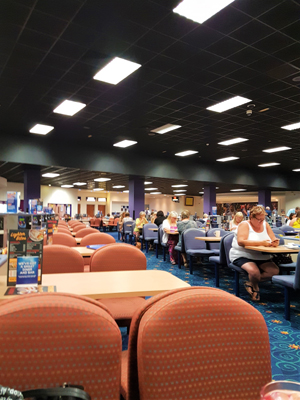
Many don’t, instead gravitating to clubs owned by the likes of Mecca and Buzz.
These chains continue to struggle on, despite the emergence of hybrid events and the continued dominance of web-based bingo.
But operators are presented with a dilemma: how to attract young people without alienating their traditional customer base.
In a desperate attempt to please everyone, bingo stalwarts Mecca have resorted to age segregation by operating themed events on different days.
It’s a difficult balancing act though.
In 2019, following complaints about some of the changes made to its bingo games, Mecca head, Barry Lyon offered these thoughts:
‘We are adapting forms of the much loved game of bingo to appeal to everyone who wants to play the game and meet those changing needs. Our existing audience is still as important as ever and we consciously segment these new concepts by time and days so as not to alienate our existing customer base, but we have to innovate and change to ensure bingo stays relevant in 2019 and beyond.’
The Future
So what does the future hold? Well the online bingo revolution left plenty of people scratching their heads, especially the elderly. In spite of an emphasis on ‘community’, the web-based game isn’t quite as inclusive as the industry makes out. Most players are between 35 – 60 years of age.
Land-based bingo is following a similar path too with bingo bosses scrambling to attract younger customers. As the we enter the second decade of the twenty-first century, two things are abundantly clear:
1. Bingo is becoming a pastime for younger players
2. Online Bingo looks set to dominate for years to come.
At Best New Bingo Sites all of our reviews are completely honest and written by industry experts. We aim to present all our offers as transparently as possible with a full explanation of the terms and conditions. We receive commission from the sites we feature and this may affect how prominently they appear on our site and their position in our listings.
